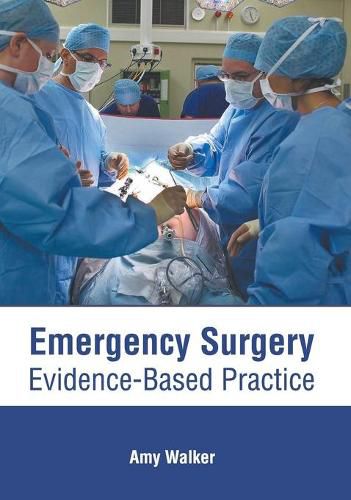Readings Newsletter
Become a Readings Member to make your shopping experience even easier.
Sign in or sign up for free!
You’re not far away from qualifying for FREE standard shipping within Australia
You’ve qualified for FREE standard shipping within Australia
The cart is loading…






The purpose of emergency surgery is to deal with life-threatening conditions. It involves the stabilization and resuscitation of the patient, preparation of the patient for surgery as well as post-operative and recovery procedures. Conducting diagnostic tests, such as CT and MRI scans, X-rays, EKG and lab work are performed to determine the underlying condition and the severity of the problem. Certain medical conditions which require emergency surgery are acute respiratory failure, severe trauma to the chest, head, abdomen or other extremities, cardiac shocks, cardiac arrhythmia, heart attack, neurological or brain conditions, aneurysms, and abdominal emergencies including appendicitis, choecystitis, perforated ulcer and bowel blockage. After surgery, medication to control pain and prevent infections is prescribed. The time of recovery depends on the condition of the patients and in certain cases, rehabilitation therapy may be necessary. This book aims to shed light on some of the unexplored aspects of emergency surgery and the recent researches in this domain. It aims to give a general view of the various procedures, practices and complication management strategies that are crucial for the management of clinical emergencies. This book, with its detailed analyses and data, will prove immensely beneficial to professionals and students involved in this area at various levels.
$9.00 standard shipping within Australia
FREE standard shipping within Australia for orders over $100.00
Express & International shipping calculated at checkout
The purpose of emergency surgery is to deal with life-threatening conditions. It involves the stabilization and resuscitation of the patient, preparation of the patient for surgery as well as post-operative and recovery procedures. Conducting diagnostic tests, such as CT and MRI scans, X-rays, EKG and lab work are performed to determine the underlying condition and the severity of the problem. Certain medical conditions which require emergency surgery are acute respiratory failure, severe trauma to the chest, head, abdomen or other extremities, cardiac shocks, cardiac arrhythmia, heart attack, neurological or brain conditions, aneurysms, and abdominal emergencies including appendicitis, choecystitis, perforated ulcer and bowel blockage. After surgery, medication to control pain and prevent infections is prescribed. The time of recovery depends on the condition of the patients and in certain cases, rehabilitation therapy may be necessary. This book aims to shed light on some of the unexplored aspects of emergency surgery and the recent researches in this domain. It aims to give a general view of the various procedures, practices and complication management strategies that are crucial for the management of clinical emergencies. This book, with its detailed analyses and data, will prove immensely beneficial to professionals and students involved in this area at various levels.